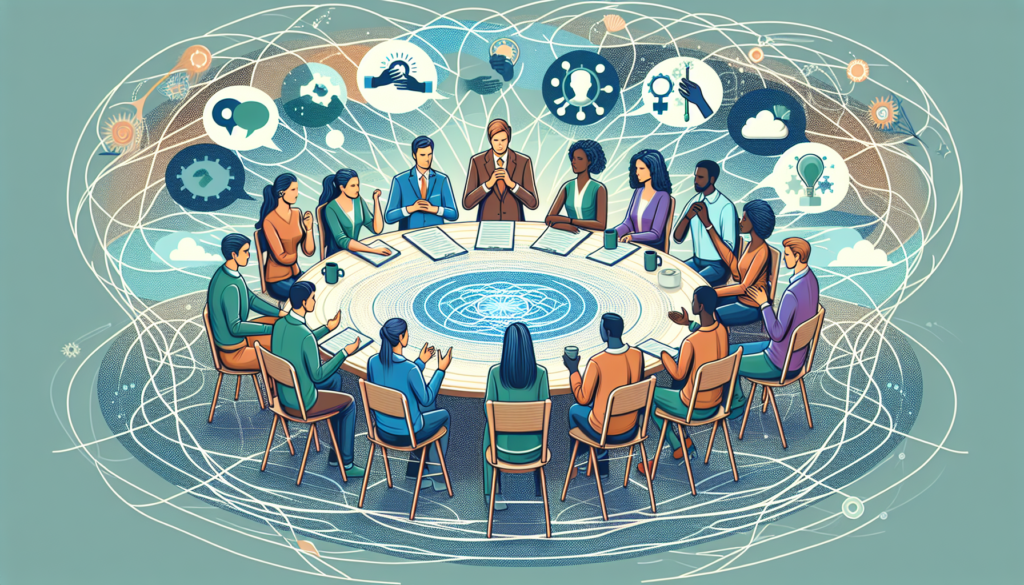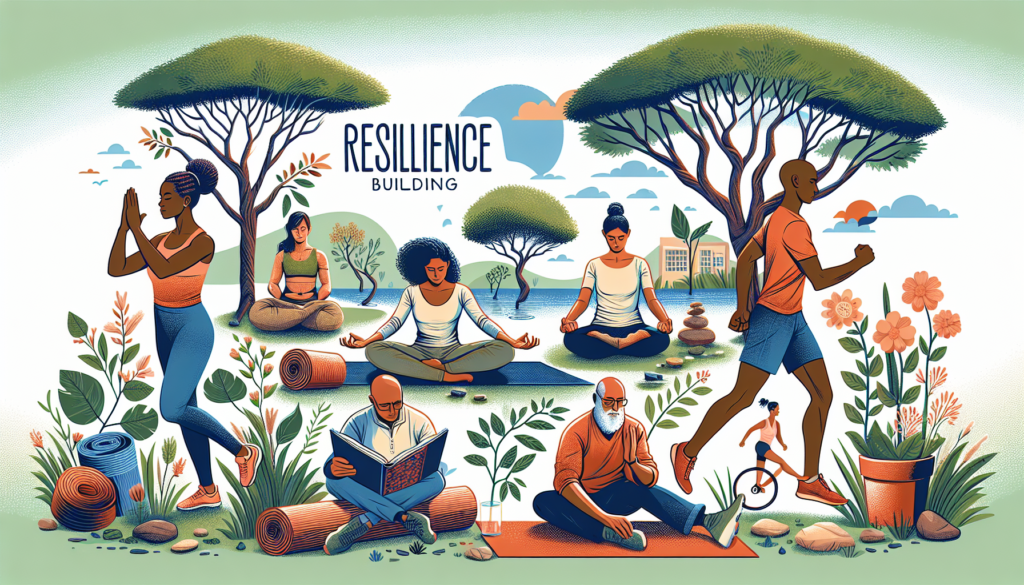Conflict Resolution Techniques: Navigating Disagreements with Skill and Grace
Conflict is an inevitable part of human interaction. Whether in personal relationships, professional settings, or even within ourselves, conflicts can arise due to differing perspectives, values, or goals. How we handle these conflicts can significantly impact the outcomes and the quality of our relationships. This is where conflict resolution techniques come into play, offering strategies and tools to navigate disagreements with skill and grace.
The Importance of Conflict Resolution
Conflict resolution is essential for maintaining healthy relationships, fostering innovation, and promoting collaboration. When conflicts are addressed constructively, they can lead to increased understanding, improved communication, and stronger connections between individuals or groups. On the other hand, unresolved conflicts can escalate, causing resentment, hostility, and ultimately damaging the relationships involved.
Effective conflict resolution techniques empower individuals to address disagreements proactively, find mutually acceptable solutions, and move forward with a sense of resolution. By learning and applying these techniques, individuals can transform conflicts into opportunities for growth, learning, and positive change.
Types of Conflict Resolution Techniques
There are various approaches to conflict resolution, each suited for different situations and contexts. Some common techniques include:
1. Collaborative Problem-Solving
Collaborative problem-solving involves working together with the conflicting parties to identify underlying interests, explore creative solutions, and reach a mutually beneficial agreement. This approach focuses on communication, empathy, and cooperation, aiming to create win-win outcomes where both parties feel satisfied with the resolution.
For example, in a workplace setting, collaborative problem-solving could involve bringing together team members with conflicting ideas to brainstorm solutions, share perspectives, and find common ground. By fostering a spirit of collaboration and openness, this technique can lead to innovative solutions and stronger team dynamics.
2. Communication Skills
Effective communication is at the heart of conflict resolution. By improving communication skills such as active listening, assertiveness, and empathy, individuals can better express their needs, understand others’ perspectives, and navigate disagreements constructively.
For instance, active listening involves fully concentrating on what the other person is saying, seeking to understand their point of view without jumping to conclusions or interrupting. By practicing active listening, individuals can show respect, build trust, and create a supportive environment for resolving conflicts.
3. Negotiation Techniques
Negotiation is a key component of conflict resolution, allowing parties to reach compromises and agreements through discussion and bargaining. Negotiation techniques like principled negotiation, distributive bargaining, and integrative bargaining can help individuals navigate conflicts by focusing on interests, options, and mutual gains.
For instance, in a business negotiation, parties may use integrative bargaining to explore common interests, brainstorm creative solutions, and maximize the value for both sides. By seeking collaborative outcomes and considering the long-term implications, negotiators can achieve sustainable agreements that benefit all parties involved.
4. Mediation and Facilitation
Mediation and facilitation involve engaging a neutral third party to help facilitate communication, guide the discussion, and support the conflicting parties in reaching a resolution. Mediators and facilitators use their impartiality, communication skills, and problem-solving abilities to assist the parties in finding common ground and addressing their differences.
For example, in a family mediation session, a trained mediator may help family members express their concerns, listen to each other’s perspectives, and develop a parenting plan that meets the needs of all family members. By creating a safe and structured environment for dialogue, mediation can promote understanding, cooperation, and lasting agreements.
Challenges and Opportunities in Conflict Resolution
While conflict resolution techniques offer valuable tools for navigating disagreements, they also present challenges and opportunities for growth. Some common challenges in conflict resolution include:
1. Emotional Intensity
Conflicts can evoke strong emotions such as anger, frustration, or fear, making it challenging to approach the situation objectively and rationally. Managing emotional intensity is crucial in conflict resolution, as heightened emotions can hinder communication, escalate conflicts, and impede the search for solutions.
By practicing emotional self-regulation, individuals can stay calm, focused, and empathetic during conflicts, increasing the likelihood of finding constructive resolutions. Techniques such as deep breathing, mindfulness, and reframing can help individuals manage their emotions and approach conflicts with a clear and balanced mindset.
2. Power Imbalance
In some conflicts, there may be a power imbalance between the parties involved, such as in hierarchical relationships or unequal distributions of resources. Power imbalances can affect the dynamics of conflicts, leading to unequal negotiation outcomes, limited communication, and feelings of injustice or resentment.
Addressing power imbalances in conflict resolution requires a focus on fairness, transparency, and empowerment. By promoting equality, inclusivity, and respect for diverse perspectives, individuals can create a level playing field for resolving conflicts and ensuring that all voices are heard and valued.
3. Cultural Differences
Cultural differences can influence how conflicts are perceived, expressed, and resolved, posing challenges for cross-cultural communication and understanding. Misunderstandings, stereotypes, and unconscious biases based on cultural differences can complicate conflict resolution processes and hinder the search for common ground.
To navigate cultural differences in conflict resolution, individuals can cultivate cultural competence, openness, and respect for diversity. By learning about different cultural norms, communication styles, and values, individuals can bridge cultural divides, build trust, and navigate conflicts with sensitivity and cultural awareness.
Despite these challenges, conflict resolution techniques also offer opportunities for growth, learning, and relationship-building. By embracing conflicts as opportunities for dialogue, understanding, and collaboration, individuals can enhance their communication skills, expand their perspectives, and strengthen their relationships with others.
Expert Opinions on Conflict Resolution Techniques
According to Dr. John Gottman, a leading expert in relationship therapy and conflict resolution, “Conflict is inevitable, but combat is optional.” Dr. Gottman emphasizes the importance of constructive conflict management strategies, such as active listening, empathy, and emotional validation, in building healthy and resilient relationships.
Similarly, Dr. Marshall Rosenberg, the founder of Nonviolent Communication, advocates for compassionate communication and empathy in resolving conflicts. Dr. Rosenberg’s approach focuses on expressing feelings and needs authentically, listening empathetically, and seeking mutual understanding to find peaceful resolutions to conflicts.
Common Misconceptions about Conflict Resolution
One common misconception about conflict resolution is that it involves avoiding or suppressing conflicts to maintain harmony. In reality, conflict resolution is about addressing conflicts openly, honestly, and constructively to promote understanding, growth, and positive change.
Another misconception is that conflict resolution techniques are only relevant in formal mediation or negotiation settings. In truth, conflict resolution techniques can be applied in various contexts, from personal relationships and family dynamics to workplace conflicts and community disputes.
Conclusion
In conclusion, conflict resolution techniques are essential tools for navigating disagreements, fostering understanding, and building stronger relationships. By embracing collaborative problem-solving, communication skills, negotiation techniques, and mediation, individuals can address conflicts constructively, find creative solutions, and move forward with a sense of resolution and empowerment.
Conflict resolution is not about eliminating conflicts but about transforming them into opportunities for growth, learning, and connection. By learning and applying conflict resolution techniques in our interactions with others, we can create a more harmonious, empathetic, and inclusive world where conflicts are viewed as opportunities for dialogue, understanding, and positive change.
Remember, conflict is a natural part of human interaction, but how we choose to resolve conflicts can make all the difference in building healthier and more fulfilling relationships. So, the next time you find yourself in a disagreement, consider applying some of the conflict resolution techniques discussed here to navigate the conflict with skill and grace.


